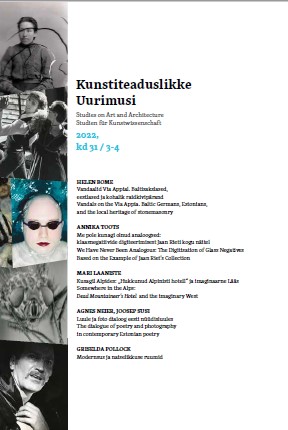Vandaalid Via Appial. Baltisakslased, eestlased ja kohalik raidkivipärand
Vandals on the Via Appia. Baltic Germans, Estonians and the local heritage of stonemasonry
Author(s): Helen BomeSubject(s): Cultural history, Visual Arts, Local History / Microhistory, 19th Century, History of Art
Published by: Eesti Kunstiteadlaste Ühing
Keywords: Baltic Germans; Estonians; Stonemasonry; carved stones; local heritage;
Summary/Abstract: The article looks at an exhibition of medieval and early modern carved stones that was established in a manor park near Tallinn at the end of the 19th century, focusing on the reoccurring acts of vandalism and eventual destruction of the exhibition during World War II. The research is based on contemporary media, travel guides, memoirs and documentation, as well as historical photographs of demolished and graffiti-covered grave slabs and architectural details. The article highlights the different relationships of Baltic Germans and Estonians to the local heritage of stonemasonry. The Via Appia was the name of an exhibition of carved stones displayed at the Rocca al Mare summer manor (Höfchen) near Tallinn in 1879–1959. It was a highly regarded spot for outings and walks for the German-speaking population of Tallinn. Existing art historical accounts paint an idyllic picture of the Via Appia: the carved stones are presented as well kept and publicly accessible. However, reading the contemporary newspapers it turns out that the owners of the summer manor had ongoing problems with Estonian vandals and tried to curtail access to the exhibition. The present article considers the Via Appia (and Estonian heritage of stonemasonry in general) through the eyes of Baltic Germans, as well as those of Estonians, in an effort to find the reasons for the vandalism of the stones.
Journal: Kunstiteaduslikke Uurimusi
- Issue Year: 31/2022
- Issue No: 03+04
- Page Range: 7-44
- Page Count: 38
- Language: Estonian
- Content File-PDF

